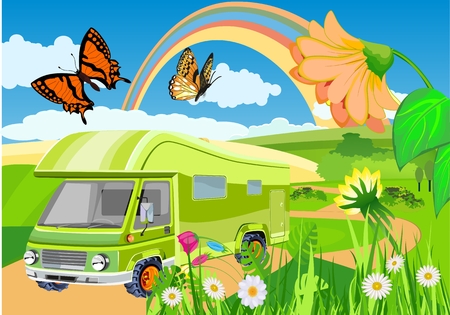Rediscovering Hidden Green Pockets
In the heart of many British gardens, there are often neglected nooks—forgotten corners where nature quietly takes back her space. These overgrown patches, sometimes seen as eyesores or simply overlooked in the busyness of daily life, actually hold remarkable potential. When we pause as a family and truly see these hidden green pockets, we unlock opportunities not just for our gardens, but for cherished moments together and the flourishing of local wildlife. Reviving these spaces is more than a tidy-up; it’s a gentle invitation to reconnect with nature, teaching children the joy of discovery and the importance of caring for all living things. In Britain’s unique climate and garden culture, these quiet corners can become vibrant havens, supporting pollinators like butterflies while weaving new memories across generations.
2. Understanding the Overgrown: What Lurks Among the Brambles?
If you pause to peek beneath the tangled arms of brambles and nettles, you’ll find a secret world quietly thriving in forgotten corners of British gardens and allotments. These overgrown spaces, while often dismissed as untidy or wild, are actually bustling with life—each patch a miniature jungle waiting to be explored by curious hands and eyes, both young and old.
For families eager to connect with nature, these neglected plots offer a living classroom. Children can play detective, peering under leaves or lifting stones to discover creatures and plants that have made these wild places their home. Parents might be surprised to find themselves just as captivated, rekindling their own sense of wonder as they explore alongside their little ones.
Common Residents of Overgrown Spaces
| Plant or Creature | What Makes It Special? |
|---|---|
| Bramble (Blackberry Bush) | Provides shelter for insects and tasty berries for birds (and humans!) |
| Nettle | A favourite for caterpillars, especially those of Red Admiral and Peacock butterflies |
| Woodlouse | Tiny recyclers, breaking down decaying plant matter into rich soil |
| Froghopper | Makes the mysterious ‘cuckoo spit’ on plant stems—a delight for kids to spot! |
| Ivy | An evergreen haven for nesting birds and late-season nectar for bees and butterflies |
The Magic of Mini-Ecosystems
Each bramble thicket or nettle patch is more than just a tangle; it’s a miniature ecosystem where plants, insects, birds, and even fungi interact in delicate balance. For example, nettles not only host butterfly caterpillars but also attract ladybirds that help keep pesky aphids at bay. Ivy blossoms provide one of the last feasts for pollinators before winter arrives.
Sparking Curiosity Together
Turning your family walk into an adventure by asking: Who lives here? Why do they choose this spot? What can we learn from their clever ways of surviving? Encouraging children to observe closely and share their discoveries helps everyone see that each forgotten corner holds a story—one just waiting for us to uncover.

3. Nature’s Artists: Inviting Butterflies Back
Transforming forgotten corners into butterfly havens is a wonderful way to reconnect with both nature and each other. British butterflies, with their vibrant wings and delicate flight, are true artists of the garden. To welcome them home, it’s important to understand which native plants and flowers they adore. Species such as buddleia, commonly known as the “butterfly bush,” offer nectar-rich clusters that attract peacocks, red admirals, and tortoiseshells. Wild marjoram, primrose, and native bluebells provide vital early-season food, while knapweed and field scabious bloom later in the year, ensuring a continuous feast for fluttering visitors.
As you explore these choices together as a family, encourage little ones to become budding naturalists—let them help pick seeds or gently plant young wildflowers. Explain how every flower is like an invitation card for different butterflies, sparking curiosity and pride as new wings appear in your reclaimed space. You might even start a “butterfly diary” to record who visits your garden over the seasons. These shared planting projects nurture not just wildlife but also family bonds, creating joyful memories and inspiring a lifelong appreciation for Britain’s living tapestry.
4. Planting Together: Family Steps to a Butterfly Haven
Transforming an overgrown corner into a thriving butterfly sanctuary is a delightful journey for the whole family, inviting children and adults alike to dig in, get their hands dirty, and learn together. Here’s how you can make it a truly British family affair—combining nature, teamwork, and plenty of laughter.
Step-by-Step: Creating Your Butterfly-Friendly Space
Start by gathering your family for a little planning session, perhaps with a pot of tea and some biscuits on hand. Each member can have a special role, no matter their age or gardening experience. Here are some simple steps to follow:
| Step | What To Do | Who Can Help? |
|---|---|---|
| 1. Survey & Clear | Walk around your chosen space. Remove any rubbish or debris (don’t forget gloves!). Carefully pull out invasive weeds but leave native wildflowers if you spot any. | Everyone (adults supervise younger children) |
| 2. Prepare the Soil | Loosen the soil with forks or trowels. Add peat-free compost for healthy roots and sprinkle with water if dry. | Children can dig; adults manage heavy work |
| 3. Choose Butterfly Plants | Select nectar-rich flowers such as buddleia, lavender, marjoram, and British wildflowers like cowslip or oxeye daisy. | The whole family – let children pick colours! |
| 4. Plant & Water | Arrange plants in clusters for easy butterfly access. Dig holes, gently place plants, backfill with soil, and water well. | Younger children plant small flowers; adults handle larger shrubs |
| 5. Add Finishing Touches | Create log piles or stone corners for shelter. Place flat stones as sunbathing spots for butterflies. | Kids love arranging stones and sticks! |
Tips to Engage Little Gardeners
- Name your patch: Make a sign together—“Butterfly Nook” or “Flutterby Corner”. Let the kids decorate it!
- Create a butterfly diary: Keep track of which butterflies visit and sketch them together on rainy afternoons.
- Taste the garden: Grow edible herbs like chives or nasturtium alongside butterfly plants—perfect for little hands to sample under supervision.
- Praise every effort: Celebrate each sprouting seedling or visiting butterfly over a cup of squash outdoors.
The Joy of Shared Discovery
This gentle transformation is more than just gardening—it’s about nurturing wonder together. By working as a team to reclaim forgotten corners, families create not only vital habitats for butterflies but also precious memories rooted in care for nature. Every tiny step—clearing brambles, planting seeds, spotting fluttering wings—is an adventure waiting to be cherished in true British style.
5. Little Observers: Spotting Butterflies and Keeping a Family Nature Diary
Transforming a forgotten corner into a butterfly haven is not just about plants; it’s about the memories and discoveries you make as a family. Encourage your little ones to become nature detectives, donning their wellies and grabbing magnifying glasses to spot fluttering visitors in your wild patch. British gardens are home to lovely species such as the Red Admiral, Peacock, and Small Tortoiseshell—each with its own story waiting to be discovered. Make it a family ritual to stroll through your garden together, pausing quietly by the brambles or buddleia to watch butterflies feeding or basking in the sun.
Turn these everyday sightings into shared learning adventures by starting a family nature diary. Use a simple notebook or get creative with scrapbook pages, jotting down the date, weather, and which butterflies you see. Encourage children to draw what they observe—perhaps the orange tips on a Comma’s wings or the dance of a Meadow Brown among the grasses. Over time, this diary becomes a living record of your garden’s transformation and an invitation for children to notice subtle seasonal changes.
To deepen their curiosity, introduce mini-challenges: Can you spot caterpillar trails on leaves? How many different colours can you find on today’s butterflies? These mindful observations help children slow down and connect with nature in a very British way—savouring small wonders over a cup of tea after your explorations. Sharing stories from your diary around the table brings everyone together, turning fleeting moments into treasured family traditions rooted in your own back garden.
6. A Community of Life: Beyond the Garden Gate
When we open our garden gates and step into our neighbourhoods, we discover that restoring forgotten corners is much more than a personal project—it becomes a community adventure. As families, lets reach out to neighbours, share seeds from our thriving butterfly havens, and exchange stories of transformation. Imagine children skipping down the street with handfuls of wildflower seeds, planting little pockets of hope on verges and in public spaces. Each patch we nurture, no matter how small, becomes part of a greater butterfly corridor weaving through our local British community.
Creating these butterfly-friendly spaces isn’t just about attracting beautiful wings; it’s about building bridges between people. Host a seed swap on your front lawn or invite friends over for a butterfly-spotting morning tea—these simple acts encourage everyone to join in. Together, we can turn once neglected spaces into living tapestries that not only support butterflies but also connect us as neighbours and friends.
The magic happens when these individual gardens link up, forming safe passageways for butterflies and pollinators across our towns and villages. By working together, we nurture not only wildlife but also a culture of sharing and care within our community—a true reflection of the British spirit. So let’s lift the latch on our garden gates, carry forward our seeds and smiles, and help transform forgotten corners into flourishing havens where nature and neighbourliness blossom side by side.

